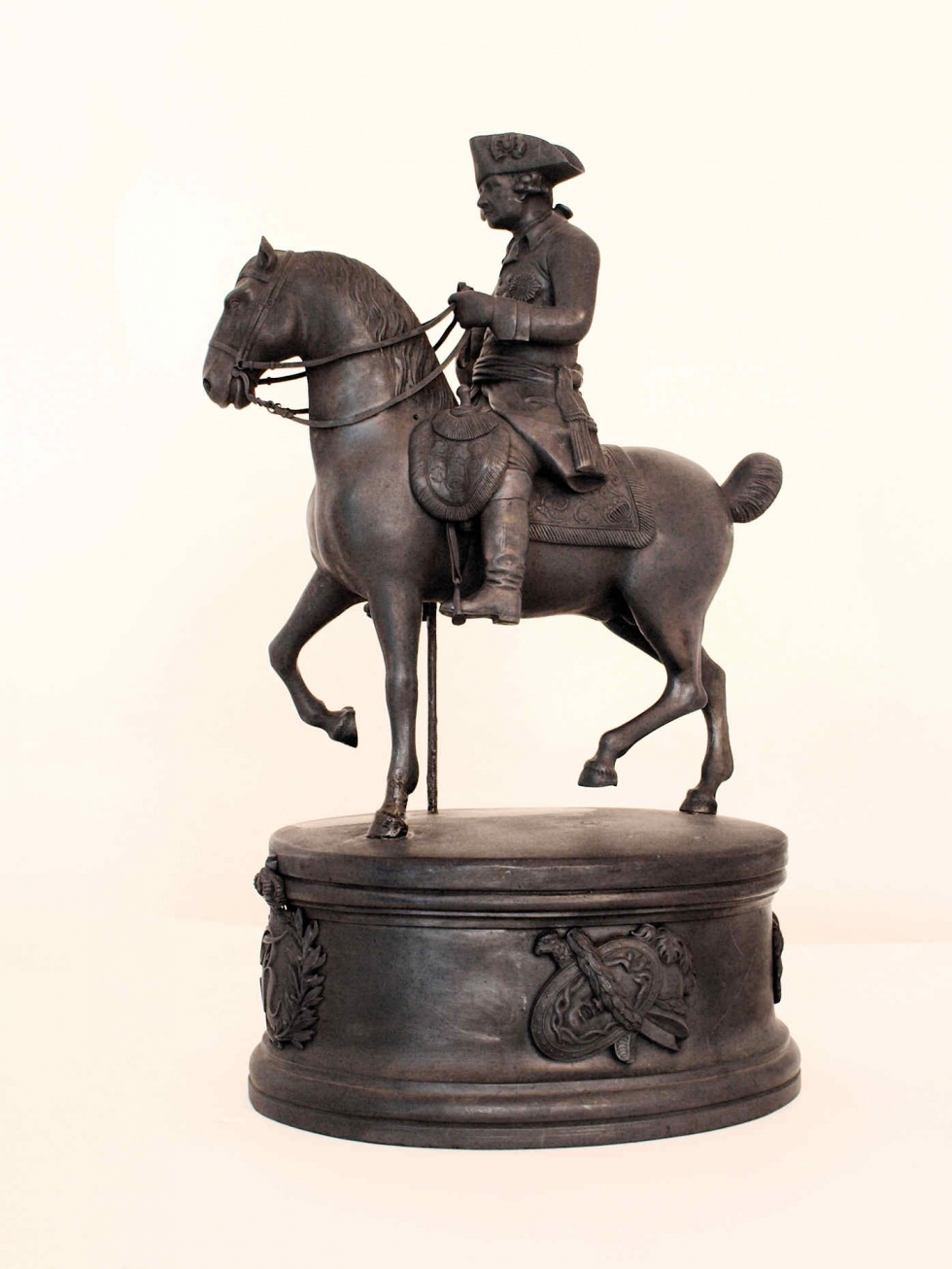Das Pferd aufrecht schreitend, den Kopf erhoben. Auf dem Pferd sitzend Friedrich II. mit leicht gekrümmten Rücken - in seiner Soldatenuniform. Die Zügel hält er in der linken Hand, die rechte Hand ist in die Hüfte gestützt und hält einen Spazierstock. Das Pferd steht auf einem ovalen Sockel. Das Objekt wurde 1917 dem Museum Weißenfels als Geschenk durch den Fabrikbesitzer A. Landsmann übergeben. Der Ankaufspreis betrug damals 500 Mark.
en

